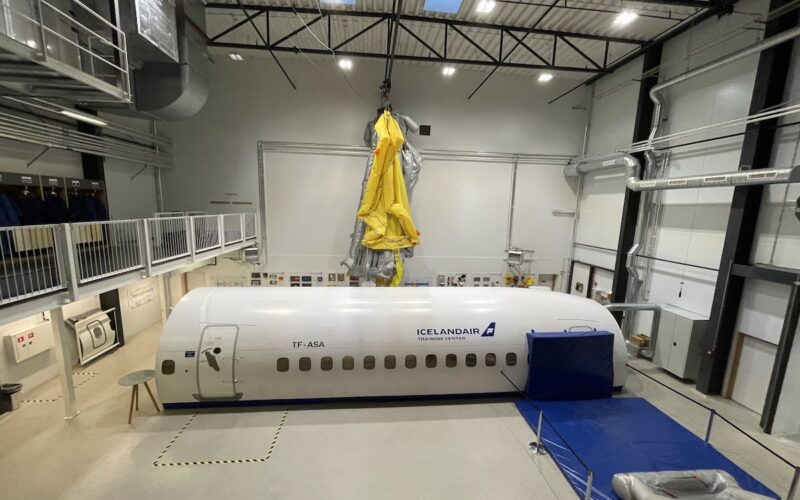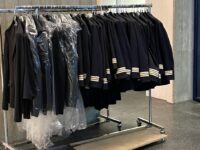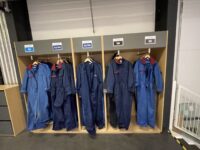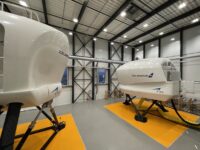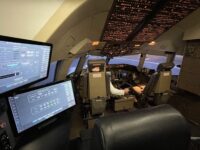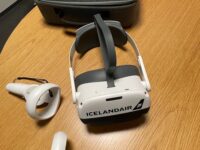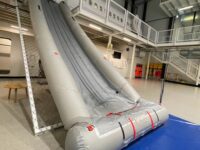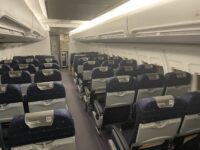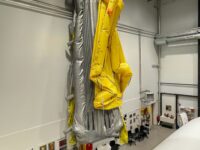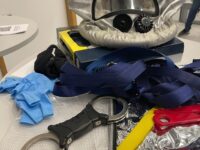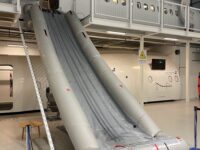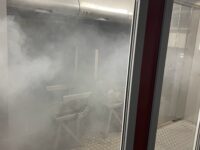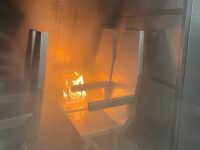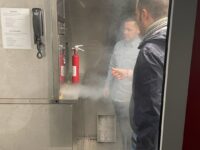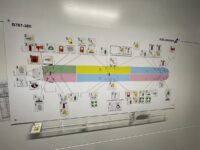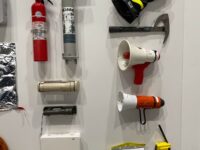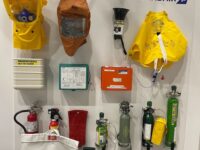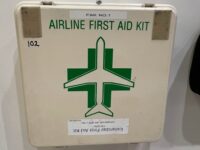If you ask any airline, there’s one thing that comes before anything else and is non-negotiable, and that’s safety.
This is why every airline must have access to a facility to train its crews in the sorts of training procedures and protocols that could one day save your life and that of fellow passengers. Many airlines operate their own training center and one of those is Icelandair.
The Icelandic flag carrier opened the doors of its training and safety center to a bunch of aviation reporters that were in Reykjavik for the biannual Icelandair Mid-Atlantic Tradeshow, a major Icelandic tourism industry event co-organized by the airline.
This is how we are able to offer our audience a rather exclusive behind-the-scenes look at a side of the aviation industry that, despite being essential, is little known outside professional circles.
Little did we know what Icelandair had in store! Instead of a simple tour, we were given the chance to experience, hands-on, some of the procedures that crews must engage in and learn to master in order to obtain their professional qualifications.
Icelandair’s training center is located in Hafnafjordur, on the outskirts of Reykjavik, on the way to Keflavik International Airport (KEF), where the airline has its hub.
It is housed in a modern purpose-built building where the majority of the company’s training activities are concentrated. These include flight simulators and pilot training, maintenance and MRO training for technical crews and theoretical and practical training, including safety procedures for cabin crew.
A large section of the facility is taken up by the flight simulators, which cover the whole Icelandair fleet, which consists of Boeing 737 MAX, Boeing 757 and Boeing 767.
The simulator center is run together with Canadian simulator maker CAE, which has a 33% stake in the flight training venture. Icelandair pilots may find themselves in the minority here, since the center is open to external customers that come to Hafnafjordur from all over the world in order to fine-tune their piloting skills or get their type ratings.
Inside the training center
The section of the center that we are going to focus our attention on in this piece is devoted to safety training.
This part is run entirely by Icelandair, mostly to train their own crews (although they may get guests to use the facilities too) in the most realistic conditions possible.
It consists of a large factory-like hall, with very high ceilings, where several aircraft mock-ups have been affixed at different levels in order to serve as real size practice settings.
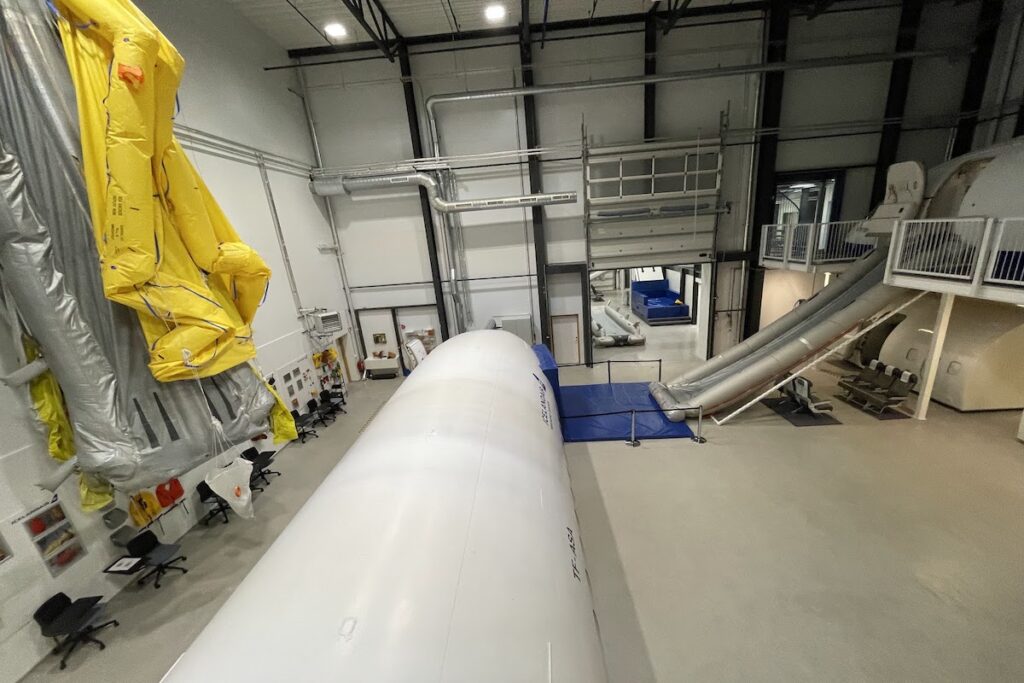
Those aircraft mock-ups are, in some cases, fuselage sections of real out-of-service aircraft preserved for this purpose (one of them, we were told, a former Monarch Boeing 757!)
The program has both a theoretical part, which takes place in a classroom, as well as a practical one. This is what the aircraft mock-ups are for.
Crews train here, in the confined space of a real aircraft fuselage, for all sorts of potential situations, from inflight service and the delivery of routine announcements to crowd control, disruptive passenger handling and evacuation training, including in heavy smoke conditions.
We were given a taster of the latter. An enclosed section of fuselage was filled with (fake) smoke and those conducting the training had to go in and try to find their way, torch in hand, to make sure no one was left behind. This is a task that is way more challenging than it sounds, even in the controlled conditions of this test site.
The mock-ups that are on an elevated level overlooking the training ground are used for training with the evacuation slides, several of which could be seen scattered around during our visit. Did you know that those inflatable slides can be turned into a raft once they are deployed in the water?
Pilots and cabin crew members are trained to be able to locate each piece of emergency equipment on the aircraft types and subtypes operated by the airline. This is why the facility is full of visual displays with every single item onboard.
These include things like handcuffs, in case crew members have to restrain violent passengers, and hazmat suits, which are carried on every aircraft (an item that, sadly, took on a special relevance during the latest pandemic).
Water training is also part of the program, although this doesn’t take place in this facility. Icelandair has an agreement with a local Olympic-sized swimming pool, which it regularly rents for “wet drill” training.
And from water to fire, because just outside the building is a prefabricated structure that serves as a fire training facility. Here different types of fire are simulated, and students must fight them with a fire extinguisher.
The techniques vary depending on the origin and location of the fire, whether it is, for example, the kitchen galley or something burning in one of the overhead bins. The extinguishing technique would be slightly different in each case, for example, if smoke comes out of the overhead bin, you should not open it, but dose the fire through a small gap.
The training program and methodology
Initial training for pilots and cabin crew ranges from four to eight weeks. Those that have already qualified return to the facility at least twice a year for hands-on training.
This recurrent training takes place every semester, either in spring or fall (there is a conscious effort to schedule the training sessions in periods outside the peak summer season when all hands are needed on deck)
Crew members receive re-training in all matters related to safety. They must learn by heart topics such as crew resource management, aircraft systems and other mandatory subjects such as ETOPS, All Weather Operations etc.
The size of the groups in training? It varies, ranging from individual training with an instructor up to classes of 24 people at a time.
At the end of the course there are also exams, of course. Some mandatory evaluations can only have a binary pass/fail result, but Icelandair’s training team uses other means to measure the knowledge and participation of the crew members too. It all depends on the task at hand.
For flight crews, Icelandair has adopted Evidence Based Training (EBT) which is a competence-based evaluation program endorsed by EASA, the European Aviation Safety Agency.
“We highly emphasize Threat and Error Management in all aspects of our training: What would be a common error in this situation and how could we mitigate that?” explained Guðmundur Tómas Sigurðsson, Head of Training at Icelandair.
There was not going to be an exam for us, the reporters, but with the Icelandair MidAtlantic Tradeshow and the airline CEO, Bogi Nils Bogason, was waiting for us to talk about the airline’s current and future plans, it was time to head for the exit. Fortunately, not the emergency one this time!

